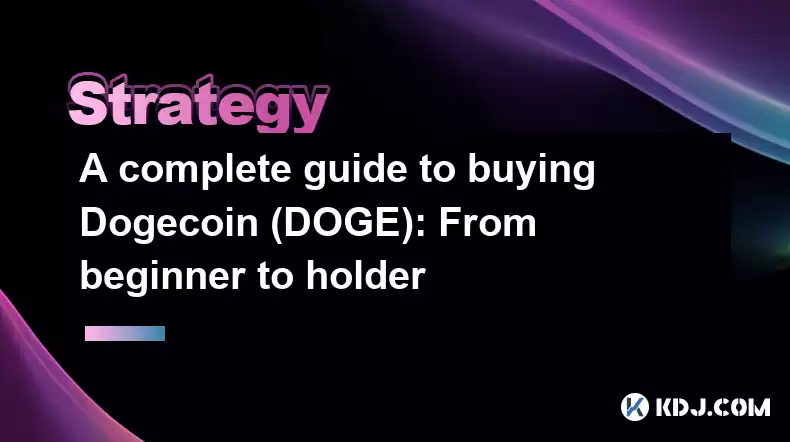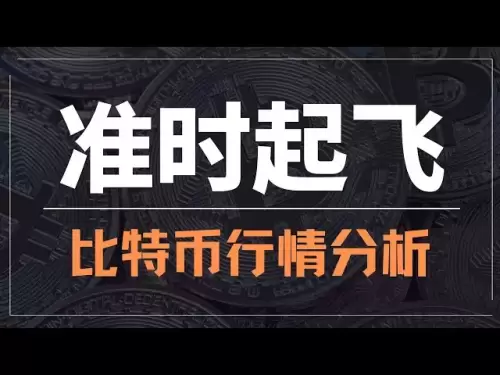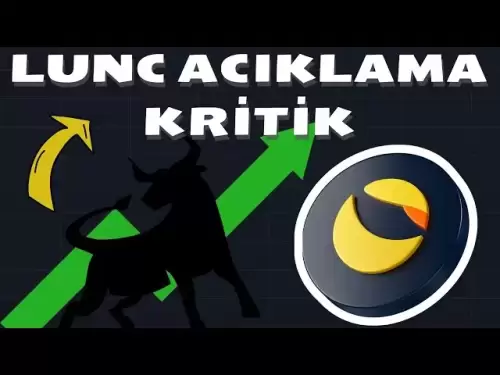-
 Bitcoin
Bitcoin $116400
0.87% -
 Ethereum
Ethereum $3819
3.86% -
 XRP
XRP $3.048
1.62% -
 Tether USDt
Tether USDt $1.000
0.03% -
 BNB
BNB $777.2
0.60% -
 Solana
Solana $169.3
0.46% -
 USDC
USDC $0.0000
0.02% -
 TRON
TRON $0.3414
2.06% -
 Dogecoin
Dogecoin $0.2126
3.33% -
 Cardano
Cardano $0.7527
1.21% -
 Hyperliquid
Hyperliquid $38.86
1.02% -
 Sui
Sui $3.683
5.27% -
 Stellar
Stellar $0.4048
1.45% -
 Chainlink
Chainlink $17.91
6.62% -
 Bitcoin Cash
Bitcoin Cash $576.9
1.29% -
 Hedera
Hedera $0.2487
1.03% -
 Ethena USDe
Ethena USDe $1.001
-0.01% -
 Avalanche
Avalanche $22.46
1.07% -
 Litecoin
Litecoin $120.8
1.69% -
 UNUS SED LEO
UNUS SED LEO $8.963
-0.30% -
 Toncoin
Toncoin $3.301
2.33% -
 Shiba Inu
Shiba Inu $0.00001250
1.13% -
 Uniswap
Uniswap $10.06
3.45% -
 Polkadot
Polkadot $3.731
1.56% -
 Dai
Dai $1.000
0.01% -
 Bitget Token
Bitget Token $4.416
1.58% -
 Cronos
Cronos $0.1482
3.73% -
 Monero
Monero $250.0
-12.34% -
 Pepe
Pepe $0.00001075
2.16% -
 Aave
Aave $274.6
4.17%
A complete guide to buying Bitcoincoin (Bitcoin): From beginner to holder
Bitcoincoin, once a meme coin, has grown popular; this guide helps beginners buy, store, and hold Bitcoin, covering exchanges, wallets, and investment tips.
Apr 10, 2025 at 12:56 pm

Dogecoin (DOGE) started as a meme cryptocurrency but has grown to become one of the most popular digital assets in the market. If you're a beginner looking to invest in DOGE, this guide will walk you through the entire process, from understanding what Dogecoin is to becoming a holder. Let's dive in.
What is Dogecoin?
Dogecoin is a cryptocurrency that was created in 2013 by Billy Markus and Jackson Palmer. It was initially intended as a humorous take on Bitcoin, featuring the Shiba Inu dog from the 'Doge' meme as its logo. Despite its origins, Dogecoin has gained a significant following and is used for tipping on social media, charitable donations, and as a form of payment.
Dogecoin operates on a proof-of-work (PoW) consensus mechanism and uses the Scrypt algorithm, similar to Litecoin. It has a total supply of over 130 billion coins, with no cap on the number of coins that can be mined. This unlimited supply is one of the key differences between Dogecoin and other cryptocurrencies like Bitcoin.
Why Invest in Dogecoin?
There are several reasons why people choose to invest in Dogecoin. First, it has a strong and active community, often referred to as the 'Doge Army,' which can drive significant interest and price movements. Second, Dogecoin has been endorsed by high-profile figures like Elon Musk, which has led to increased visibility and adoption. Third, its low transaction fees and fast transaction times make it an attractive option for small, everyday transactions.
However, it's important to understand that investing in cryptocurrencies, including Dogecoin, comes with risks. The value of DOGE can be highly volatile, and you should only invest what you can afford to lose.
How to Buy Dogecoin
Buying Dogecoin is a straightforward process, but it requires a few steps. Here's a detailed guide on how to do it:
Choose a Cryptocurrency Exchange: The first step is to select a reputable cryptocurrency exchange that supports Dogecoin. Some popular options include Binance, Coinbase, and Kraken. Each exchange has its own set of features, fees, and user interfaces, so choose one that best fits your needs.
Create an Account: Once you've chosen an exchange, you'll need to create an account. This typically involves providing your email address, setting a password, and completing a verification process, which may require you to submit identification documents.
Deposit Funds: After your account is set up and verified, you'll need to deposit funds into your exchange account. Most exchanges allow you to deposit money via bank transfer, credit/debit card, or other payment methods. Choose the method that is most convenient for you.
Buy Dogecoin: With funds in your account, you can now buy Dogecoin. Navigate to the trading section of the exchange, search for the DOGE trading pair (e.g., DOGE/USD), and enter the amount of DOGE you want to buy. Review the order details and confirm the purchase.
Withdraw Dogecoin to a Wallet: For added security, it's recommended to transfer your Dogecoin to a personal wallet rather than leaving it on the exchange. You can choose from various types of wallets, including hardware wallets like Ledger or Trezor, software wallets like Exodus or Trust Wallet, or paper wallets. Follow the wallet provider's instructions to set up your wallet and transfer your DOGE.
Storing Dogecoin Safely
Once you've bought Dogecoin, it's crucial to store it safely. Here are some tips for securing your DOGE:
Use a Hardware Wallet: Hardware wallets are considered the most secure option for storing cryptocurrencies. They store your private keys offline, making them less vulnerable to hacking attempts.
Enable Two-Factor Authentication (2FA): Many wallets and exchanges offer 2FA, which adds an extra layer of security to your account. Enable this feature to protect your DOGE from unauthorized access.
Keep Your Private Keys Safe: Your private keys are what allow you to access and spend your Dogecoin. Keep them confidential and store them in a secure location, such as a safe or a secure digital vault.
Regularly Update Your Wallet Software: Wallet providers often release updates to fix security vulnerabilities. Make sure to keep your wallet software up to date to protect your DOGE.
Becoming a Dogecoin Holder
Once you've bought and securely stored your Dogecoin, you're officially a DOGE holder. Here are some tips for managing your investment:
Stay Informed: The cryptocurrency market is highly dynamic, and staying informed about the latest developments can help you make better investment decisions. Follow reputable news sources, join Dogecoin communities, and keep an eye on market trends.
Diversify Your Portfolio: While Dogecoin can be a fun and potentially profitable investment, it's wise to diversify your portfolio to spread risk. Consider investing in other cryptocurrencies, stocks, or other assets to balance your investment strategy.
Set Realistic Expectations: Cryptocurrency investments can be highly volatile, and it's important to set realistic expectations. Don't expect to get rich overnight, and be prepared for the possibility of losing some or all of your investment.
Consider Long-Term Holding: Many investors choose to hold onto their Dogecoin for the long term, believing in its potential for future growth. If you decide to take this approach, be patient and prepared to weather market fluctuations.
Frequently Asked Questions
Q: Can I use Dogecoin for everyday purchases?
A: Yes, Dogecoin can be used for everyday purchases at merchants that accept it as a form of payment. Some online retailers and services accept DOGE, and there are also platforms like Bitrefill that allow you to use Dogecoin to purchase gift cards for various stores.
Q: How can I earn more Dogecoin?
A: There are several ways to earn more Dogecoin. You can mine DOGE using your computer's processing power, although this is less profitable than it used to be due to increased competition. Alternatively, you can participate in Dogecoin faucets, which are websites that give out small amounts of DOGE for completing tasks or viewing ads. You can also earn DOGE by receiving tips on social media platforms that support Dogecoin tipping.
Q: Is Dogecoin a good long-term investment?
A: Whether Dogecoin is a good long-term investment depends on your investment goals and risk tolerance. While some investors believe in Dogecoin's long-term potential due to its strong community and growing adoption, others see it as a speculative asset with high volatility. It's important to do your own research and consider your financial situation before making any investment decisions.
Q: How do I sell my Dogecoin?
A: Selling Dogecoin is similar to buying it. You'll need to transfer your DOGE back to a cryptocurrency exchange, navigate to the trading section, and place a sell order for the amount of DOGE you want to sell. Once the order is filled, you can withdraw the proceeds to your bank account or another payment method supported by the exchange.
Disclaimer:info@kdj.com
The information provided is not trading advice. kdj.com does not assume any responsibility for any investments made based on the information provided in this article. Cryptocurrencies are highly volatile and it is highly recommended that you invest with caution after thorough research!
If you believe that the content used on this website infringes your copyright, please contact us immediately (info@kdj.com) and we will delete it promptly.
- Pi Coin's dApp and AI Potential: Building a Decentralized Future
- 2025-08-08 02:30:12
- Bitcoin, Greenidge, and Liquidity: Navigating the Crypto Currents in NYC
- 2025-08-08 02:30:12
- Crypto Phishing Alert: $3 Million USDT Loss Highlights DeFi Risks
- 2025-08-08 01:10:12
- Crypto Presale Mania: Is Punisher Coin the High ROI King?
- 2025-08-08 01:10:12
- Online Betting, Platforms & Crypto Access: What's Hot in 2025
- 2025-08-08 00:50:12
- Layer Brett: The Meme Coin Primed for 100x Gains?
- 2025-08-08 01:50:12
Related knowledge

How to avoid common crypto investment mistakes?
Jul 13,2025 at 01:35am
Understanding the Risks of Crypto InvestmentInvesting in cryptocurrency can be highly rewarding, but it also comes with significant risks. One of the ...

What is a long-short crypto strategy?
Jul 15,2025 at 10:56am
Understanding the Basics of a Long-Short Crypto StrategyA long-short crypto strategy is an investment approach where traders simultaneously take long ...

What is a long-short crypto strategy?
Jul 11,2025 at 01:28pm
Understanding the Basics of Long-Short Crypto StrategyA long-short crypto strategy is an investment approach where traders take both long and short po...

How to use the RSI indicator for crypto?
Jul 12,2025 at 03:56pm
Understanding the RSI Indicator in Cryptocurrency TradingThe Relative Strength Index (RSI) is a momentum oscillator used to measure the speed and chan...

Is copy trading a good strategy for crypto beginners?
Jul 12,2025 at 08:28am
Understanding Copy Trading in the Cryptocurrency MarketCopy trading is a strategy where novice traders replicate the trades of experienced investors a...

How to build a crypto portfolio with $1000?
Jul 13,2025 at 08:14pm
Understanding the Basics of Cryptocurrency InvestmentBuilding a crypto portfolio with $1000 starts with understanding the fundamentals of cryptocurren...

How to avoid common crypto investment mistakes?
Jul 13,2025 at 01:35am
Understanding the Risks of Crypto InvestmentInvesting in cryptocurrency can be highly rewarding, but it also comes with significant risks. One of the ...

What is a long-short crypto strategy?
Jul 15,2025 at 10:56am
Understanding the Basics of a Long-Short Crypto StrategyA long-short crypto strategy is an investment approach where traders simultaneously take long ...

What is a long-short crypto strategy?
Jul 11,2025 at 01:28pm
Understanding the Basics of Long-Short Crypto StrategyA long-short crypto strategy is an investment approach where traders take both long and short po...

How to use the RSI indicator for crypto?
Jul 12,2025 at 03:56pm
Understanding the RSI Indicator in Cryptocurrency TradingThe Relative Strength Index (RSI) is a momentum oscillator used to measure the speed and chan...

Is copy trading a good strategy for crypto beginners?
Jul 12,2025 at 08:28am
Understanding Copy Trading in the Cryptocurrency MarketCopy trading is a strategy where novice traders replicate the trades of experienced investors a...

How to build a crypto portfolio with $1000?
Jul 13,2025 at 08:14pm
Understanding the Basics of Cryptocurrency InvestmentBuilding a crypto portfolio with $1000 starts with understanding the fundamentals of cryptocurren...
See all articles

























































































